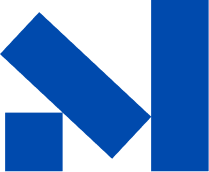The Ultimate Guide to Corporate Mental Health Program Design
1. Why Corporate Mental Health Training Matters
In today’s fast-paced business environment, investing in corporate mental health training is no longer a luxury; it is essential for sustaining productivity, engagement, and retention. Studies show that untreated mental health conditions cost the global economy over $1 trillion annually in lost productivity. By implementing robust corporate wellness programs that prioritize psychological safety and support, organizations can reduce absenteeism, lower healthcare costs, and foster a more resilient workforce. Moreover, offering comprehensive workplace well‑being solutions demonstrates a genuine commitment to employees’ holistic health, strengthening employer brand and boosting morale.
2. Key Components of Corporate Mental Health Program Design
A successful corporate mental health program design hinges on several interconnected elements. Below, we explore each component in detail.
2.1. Needs Assessment and Baseline Surveys
Before you begin designing a corporate mental health program, establish a clear baseline:
Anonymous employee surveys to gauge stress levels, burnout, and existing support gaps.
Focus groups with diverse teams to uncover unique pain points.
Data analysis of absenteeism, turnover, and healthcare claims.
This initial assessment guides targeted interventions and helps track progress over time. Good evaluation design is as critical as the strategies themselves.
2.2. Leadership Buy‑In and Culture Change
Visible executive sponsorship is non‑negotiable. Leaders must:
Publicly endorse mental health initiatives.
Actively participate in wellness trainings and initiatives.
Allocate budget and resources for employee mental health support.
When leadership models vulnerability and prioritizes wellness, a culture of trust and openness flourishes.
2.3. Program Framework and Curriculum
Design a modular curriculum that blends:
Educational Workshops on stress management and resilience.
Skill‑Building Sessions for managers on mental health conversations.
Digital Learning Modules for on‑demand access.
Peer Support Networks to foster community.
Align content with both professional development mental health goals and core business competencies to maximize engagement.
Delivery Channels: Virtual and In‑Person
Hybrid delivery ensures accessibility:
Virtual mental health workshops for remote or global teams.
In‑person seminars to build deeper connections.
On‑demand e‑learning for self‑paced skill building.
Leveraging multiple channels broadens reach and accommodates diverse learning preferences.
2.4. Employee Mental Health Support Resources
Beyond training, embed ongoing support:
Employee Assistance Programs (EAPs) offering confidential counseling.
Wellness apps for meditation, sleep, and stress tracking.
On‑site or virtual coaching for high‑risk groups.
A robust ecosystem of employee mental health support tools ensures help is available when it’s needed most.
Professional Development and Capacity Building
Integrate mental wellness into career growth:
Leadership coaching that includes emotional intelligence and trauma‑informed approaches.
Capacity building workshops on resilience and adaptive thinking.
Certification programs to recognize mental health champions.
This dual focus on skills and well‑being fosters a more capable, engaged workforce.
3. Best Practices and Evidence‑Based Strategies
Drawing on research and field experience, here are eight best practices for effective program design:
Cultivate a Supportive Culture
Embed mental health in core values and daily rituals.
Offer Robust Mental Health Benefits
Provide comprehensive coverage for therapy, coaching, and digital tools.
Develop Clear Policies and Practices
Ensure written guidelines on accommodations, leave, and confidentiality.
Foster a Healthy Work Environment
Optimize ergonomics, encourage breaks, and create quiet zones.
Secure Leadership Support
Train executives on mental health literacy and inclusive leadership.
Leverage Evidence‑Based Interventions
Use proven modalities like CBT, mindfulness, and trauma‑informed care.
Measure Outcomes Rigorously
Track key performance indicators such as engagement, productivity, retention, and healthcare costs.
Drive Innovation Continuously
Pilot emerging complementary solutions (e.g., VR, AI‑powered apps) and iterate.
4. Measuring Corporate Mental Health Program ROI
Quantifying the impact of corporate mental health training is essential for securing ongoing investment.
Defining KPIs :
Select metrics that align with business goals:
Absenteeism rates
Presenteeism indexes
Employee Net Promoter Score (eNPS)
Utilization of support resources
Trends in healthcare cost
Data Collection and Analysis
Conduct pre and post-program surveys.
Integrate data from HRIS, EAP vendors, and wellness platforms.
Use dashboard tools (Power BI, Tableau) for real‑time monitoring.
Reporting and Continuous Improvement
Share quarterly ROI reports with stakeholders.
Highlight cost savings from reduced turnover and lower claims.
Continuously refine program elements based on feedback and performance data to ensure your ROI measurement process delivers increasing impact.
5. Case Study: Entrust’s Program Revamp
After the pandemic and social upheaval in 2020, Entrust saw a 74% rise in mental health leave requests. They restructured their corporate wellness programs to include meditation workshops, mental health coaching, and social support events. Within six months, participation in wellness initiatives rose 30%, and turnover decreased by 12%. This underscores the power of flexible, data‑driven program design.
6. Step‑by‑Step Roadmap: Designing a Corporate Mental Health Program
Survey and Diagnose: Launch baseline assessments.
Align with Leadership: Confirm priorities and secure resource commitment.
Map Framework: Define modules, including training, resources, and coaching.
Develop Content: Partner with experts for curriculum creation.
Pilot and Refine: Test with a small cohort, collect feedback.
Scale and Integrate: Roll out across the organization.
Measure and Report: Track KPIs and report ROI.
Iterate: Continuously enhance based on insights.
7. Common Pitfalls and How to Avoid Them
Pitfall: Launching without leadership support.
Solution: Build executive sponsorship through data and storytelling.
Pitfall: One‑size‑fits‑all training.
Solution: Customize modules for different teams and roles.
Pitfall: Neglecting measurement.
Solution: Embed ROI tracking from the outset.
Pitfall: Ignoring culture.
Solution: Align program design with company values and rituals.
8. Conclusion and Next Steps
Designing a corporate mental health training program that truly delivers workplace well‑being solutions requires a strategic blend of needs assessment, leadership engagement, evidence‑based content, and rigorous measurement. By following this guide to corporate mental health program design, you’ll create a resilient, supportive environment that drives both human and business outcomes.
Ready to transform your organization?
9. FAQs
Q1: How long does it take to implement a corporate mental health program?
Implementation timelines vary, but a phased rollout from pilot to full scale typically spans three to six months.
Q2: What budget should we allocate for mental health training?
Allocate 1–3% of payroll for comprehensive corporate wellness programs, adjusting based on company size and scope.
Q3: How do we ensure confidentiality in employee mental health support?
Use third‑party EAP providers, secure digital platforms, and clear privacy policies to protect employee data.
Q4: Can small businesses afford these programs?
Yes, start small with virtual workshops and digital resources, then expand as the return on investment becomes evident.
Q5: How often should we measure program ROI?
Quarterly reviews are recommended to keep leadership informed and guide continuous improvement.

